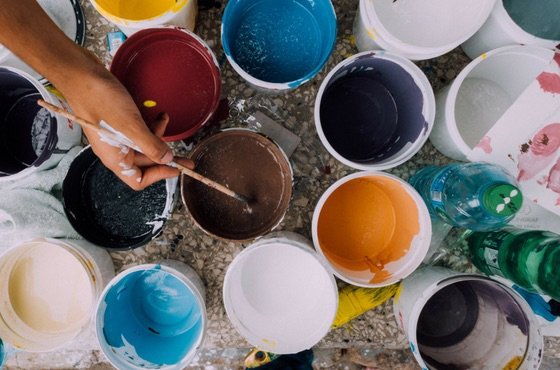How to use colors for your communication?

In communication, the message you wish to convey to the customer is only captivating to the eye if the colors of the latter attract him and are in line with your personality. The message is then first passed through the color, and finally the message is read. As you will have understood, color in communication is not an element to be used at random. A yellow is not as good as a red or a blue, as the latter have a specific connotation and do not have the same visual effect on the various communication media. But then, how can colors be used wisely? What is the meaning of colors in marketing and communication?
Which color for which message?
The symbolism of colors is essential in the creation of your communication supports, whether it is for printed supports such as brochures, leaflets, booklets, business cards or even digital supports or to create a website. Determining the main color of your graphic charter, the tone according to the primary colors chosen or choosing not to use warm or cool colors, all this process will inspire consumers towards your philosophy and image.
We associate pink with femininity, tenderness and softness. As for yellow, it is a color with a double and contradictory meaning: tonic, optimistic, warm and radiant, it also represents betrayal. Nevertheless, it is a color that adapts well to a work environment, it is conducive to instant reflection.
Red represents power, excitement, youth and energy: ideal for impulse buys and sports teams. Red represents power, excitement, youth and energy: ideal for impulse purchases and sports teams, while blue is used to represent learning and memorization, the symbol of water, blue is associated with “freshness”. These values are directly and unconsciously associated with your company when you use them in communication.
Green is balance, hope, calm, nature, health… It is an anti-stress color that soothes and reassures, inspires confidence and serenity. White is the symbol of divinity, cleanliness, purity and chastity. Excellent for hygiene products, this color represents sobriety and luxury in packaging.
Luxury is also represented by black. Luxury is also represented by black, which is a symbol of excellence, rigor and elegance, respect and sobriety. Orange is the color of creativity, youth, trust, friendship and carefree.
It is of major importance to think about the color of your medium to convey a message in your corporate communication.
Some mistakes to avoid in the choice of colors in communication
Checking color assortments
The choice of colors for your graphic charter must be made according to your values. The objective is to make a good impression and to please the consumer. Harmonious colors for your corporate communication are therefore essential.
Colors are divided into 3 categories: primary (magenta, cyan, yellow), complementary (orange, green, purple) and tertiary (red-orange, yellow-orange, yellow-green, blue-green, blue-violet and red-violet). Successfully combining them means associating a primary color with a secondary color (blue with orange for example). Mixtures based on a complementary relationship are more dynamic, which will always enhance your communication. An effective visual rendering is often composed of 3 colors, which can be declined in their nuances.
Adapt your choices to the communication medium
All colors will have a different result depending on their communication medium, whether it is paper, large or small (flyer, poster) or on the Internet. To make nuances, while keeping your universe is important. If you want to transform a digital communication on a print medium for example, one rule is simple to avoid mistakes: make tests. Even with professional printers, colors change between screen and paper.
The specificity of websites
For your digital communication, the declination of your color palette (ideally 3, a primary, a secondary and a complementary color) must follow certain rules to remain coherent and harmonious. We therefore advise you to cover 60% of your communication space with the main color, 30% with the secondary color and 10% with the complementary color.
What is Habefast purple and yellow?
Following the example of our communication agency, we have chosen mainly the color purple and yellow.
Purple is a subtle mix between blue and red and will represent delicacy and imagination. It is used in visual communication to evoke an artistic aspect. We chose this color because our communication agency has a fully-fledged Creation department where a team of artistic directors and graphic designers work daily.
Yellow, a primary color, will evoke heat and light. It is often associated with good mood, joie de vivre and symbolizes logic and creativity. The choice of this color was relevant to represent our entire team passionate about entrepreneurship, dynamic and enthusiastic. It is in permanent search of quality and customer satisfaction.
